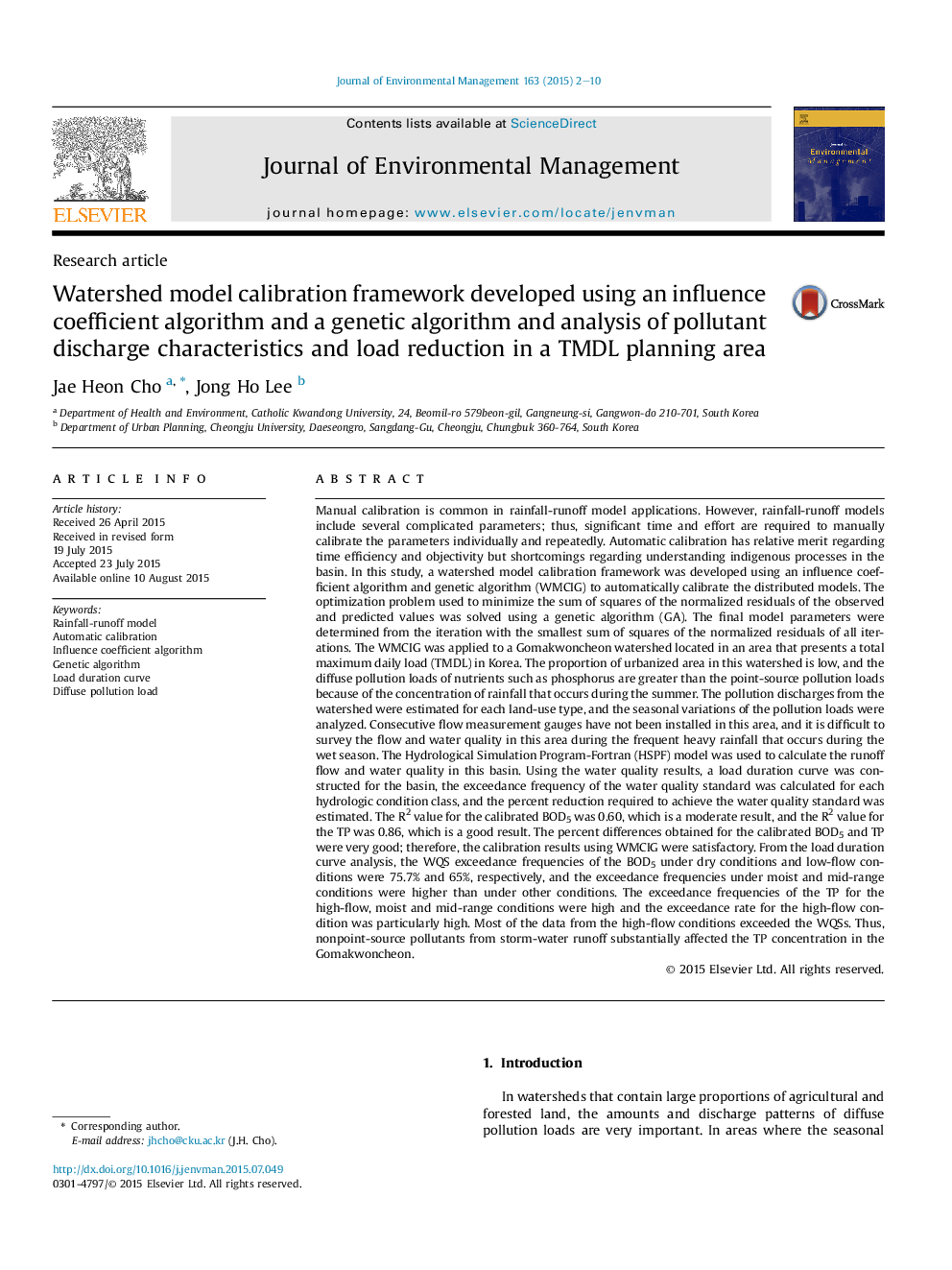| Article ID | Journal | Published Year | Pages | File Type |
|---|---|---|---|---|
| 1055506 | Journal of Environmental Management | 2015 | 9 Pages |
•An automatic calibration framework for a distributed watershed model was presented.•The model was developed using an influence coefficient algorithm and genetic algorithm.•Diffuse pollution discharge characteristics in a TMDL planning area was analyzed.•The exceedance rates of the water quality standard were analyzed using the LDC.•Percent load reduction to achieve the water quality standard was estimated.
Manual calibration is common in rainfall-runoff model applications. However, rainfall-runoff models include several complicated parameters; thus, significant time and effort are required to manually calibrate the parameters individually and repeatedly. Automatic calibration has relative merit regarding time efficiency and objectivity but shortcomings regarding understanding indigenous processes in the basin. In this study, a watershed model calibration framework was developed using an influence coefficient algorithm and genetic algorithm (WMCIG) to automatically calibrate the distributed models. The optimization problem used to minimize the sum of squares of the normalized residuals of the observed and predicted values was solved using a genetic algorithm (GA). The final model parameters were determined from the iteration with the smallest sum of squares of the normalized residuals of all iterations. The WMCIG was applied to a Gomakwoncheon watershed located in an area that presents a total maximum daily load (TMDL) in Korea. The proportion of urbanized area in this watershed is low, and the diffuse pollution loads of nutrients such as phosphorus are greater than the point-source pollution loads because of the concentration of rainfall that occurs during the summer. The pollution discharges from the watershed were estimated for each land-use type, and the seasonal variations of the pollution loads were analyzed. Consecutive flow measurement gauges have not been installed in this area, and it is difficult to survey the flow and water quality in this area during the frequent heavy rainfall that occurs during the wet season. The Hydrological Simulation Program-Fortran (HSPF) model was used to calculate the runoff flow and water quality in this basin. Using the water quality results, a load duration curve was constructed for the basin, the exceedance frequency of the water quality standard was calculated for each hydrologic condition class, and the percent reduction required to achieve the water quality standard was estimated. The R2 value for the calibrated BOD5 was 0.60, which is a moderate result, and the R2 value for the TP was 0.86, which is a good result. The percent differences obtained for the calibrated BOD5 and TP were very good; therefore, the calibration results using WMCIG were satisfactory. From the load duration curve analysis, the WQS exceedance frequencies of the BOD5 under dry conditions and low-flow conditions were 75.7% and 65%, respectively, and the exceedance frequencies under moist and mid-range conditions were higher than under other conditions. The exceedance frequencies of the TP for the high-flow, moist and mid-range conditions were high and the exceedance rate for the high-flow condition was particularly high. Most of the data from the high-flow conditions exceeded the WQSs. Thus, nonpoint-source pollutants from storm-water runoff substantially affected the TP concentration in the Gomakwoncheon.
